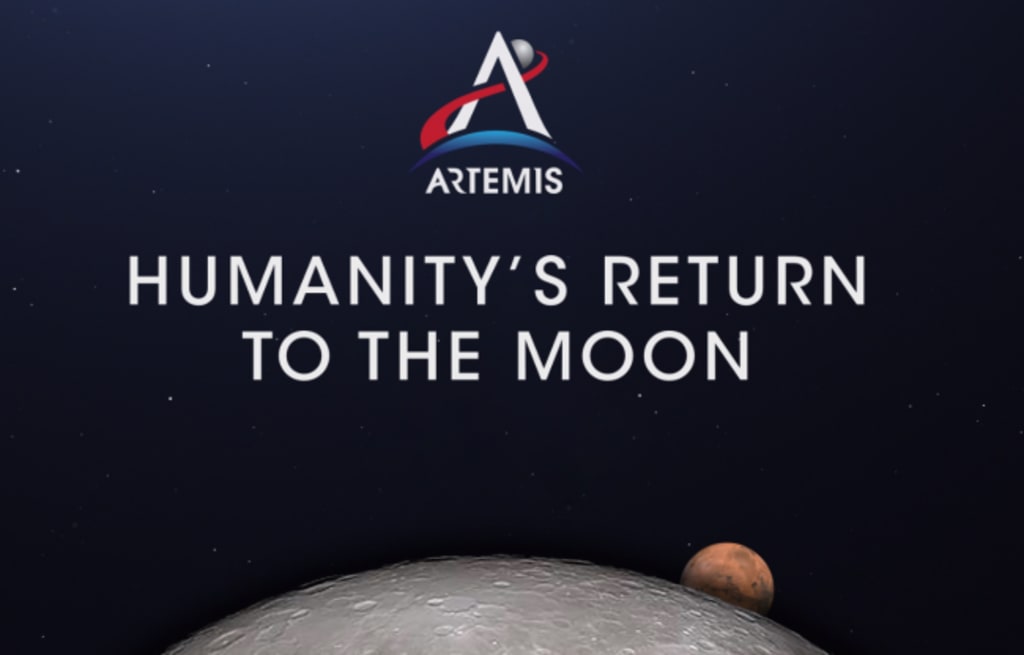
On July 20, 1969, American astronaut Neil Armstrong took one small step onto the lunar surface and made history as the first human to walk on the Moon. This momentous achievement marked a giant leap forward in human exploration and inspired generations of scientists and engineers to push the boundaries of what we can accomplish in space.
Now, more than 55 years after that historic moment, NASA is once again planning to send humans back to the Moon as part of the Artemis program. The goal of the Artemis program is to establish a sustainable human presence on the Moon by 2024, with the aim of using the Moon as a stepping stone for future human missions to Mars and beyond.
The Artemis program represents a new era of human exploration in space, building on the legacy of the Apollo program and using new technologies and techniques to achieve even greater scientific and engineering feats. Unlike the Apollo missions, which focused on brief visits to the Moon's surface, the Artemis program is designed to establish a long-term presence on the Moon, with astronauts spending weeks or even months at a time on the lunar surface.
The first phase of the Artemis program involves a series of robotic precursor missions, including the Commercial Lunar Payload Services (CLPS) program. The CLPS program is designed to deliver scientific instruments and technology demonstrations to the Moon, paving the way for future human missions.
One of the key objectives of the CLPS program is to investigate the lunar environment and understand how it can be used to support human exploration. For example, scientists are studying the composition of the lunar soil, the availability of resources like water ice, and the potential hazards posed by radiation and other factors. By gathering this data, NASA can better prepare for future human missions and ensure that astronauts have the tools and resources they need to thrive on the Moon.
In addition to these robotic missions, NASA is also developing the Orion spacecraft and the Space Launch System (SLS) rocket, which will carry astronauts to lunar orbit. The Orion spacecraft is designed to be a flexible and versatile vehicle that can support a wide range of missions, from delivering cargo and supplies to the Moon to transporting astronauts on long-duration missions to Mars and beyond.
The SLS rocket, meanwhile, is the most powerful rocket ever built by NASA, with the ability to launch payloads of up to 130 metric tons into space. This massive rocket will be used to launch the Orion spacecraft and other payloads into orbit around the Moon, paving the way for human missions to the lunar surface.
The first uncrewed test flight of the SLS and Orion spacecraft, known as Artemis I, is currently scheduled for November 2021. This mission will serve as a crucial test of the spacecraft and rocket systems that will be used to send humans to the Moon in the coming years.
Once the Artemis program is fully underway, NASA plans to establish a sustainable lunar outpost, complete with habitats, rovers, and other infrastructure. This outpost will serve as a base for scientific research, as well as a testing ground for new technologies and techniques that could be used on future human missions to Mars and beyond.
One of the key challenges of establishing a sustainable human presence on the Moon is the need to develop new technologies and techniques that can support human life in the harsh lunar environment. For example, NASA is exploring ways to generate oxygen and other resources on the Moon using local materials, as well as developing new radiation shielding technologies to protect astronauts from the harmful effects of space radiation.
Another important aspect of the Artemis program is its emphasis on international cooperation and collaboration. NASA has partnered with space agencies and industry partners around the world to help achieve the goals of the Artemis program, with the aim of advancing scientific knowledge and expanding our understanding of the universe.
In addition to the scientific and technological benefits of the Artemis program, there are also significant economic benefits to be gained. The development and operation of the Artemis program are expected to create thousands of new jobs and generate billions of dollars in economic activity, both in the United States and around the world.
Despite the many challenges and uncertainties that lie ahead, there is no doubt that the Artemis program represents an exciting new chapter in the human exploration of space. By returning humans to the Moon and establishing a sustainable lunar presence, NASA and its partners are paving the way for even greater achievements in the decades to come.
As we look forward to the next phase of human exploration in space, it is worth reflecting on the achievements of the past. The Apollo program represented a remarkable feat of engineering and human ingenuity, and its legacy continues to inspire and motivate us today.
Now, with the Artemis program, we have the opportunity to build on that legacy and achieve even greater things. By working together and pushing the boundaries of what we can accomplish, we can ensure that humanity's journey into space continues for generations to come.
About the Creator
Enjoyed the story? Support the Creator.
Subscribe for free to receive all their stories in your feed. You could also pledge your support or give them a one-off tip, letting them know you appreciate their work.





Comments
There are no comments for this story
Be the first to respond and start the conversation.